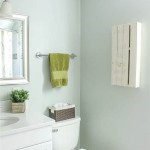How to Replace a Drain Pipe in a Bathroom Sink
Replacing a bathroom sink drain pipe is a common plumbing task that homeowners can often undertake themselves, saving on professional service costs. Successful completion hinges on understanding the components of the drain system, proper preparation, and careful execution. This article provides a detailed guide on how to replace a bathroom sink drain pipe.
Assessing the Situation and Gathering Supplies
Before initiating any work, a thorough assessment of the existing drain system is crucial. Identifying the type of drain pipe currently installed, noting any visible damage, and determining the specific reason for replacement will dictate the necessary replacement parts and tools. The most common types of drain pipes found under bathroom sinks include PVC (polyvinyl chloride), ABS (acrylonitrile butadiene styrene), and occasionally, older metal pipes such as brass or galvanized steel. Understanding the material is vital because it influences the type of connectors and techniques used.
The reasons for replacement can vary. Leaks are a frequent cause, often stemming from corroded pipes, loose connections, or cracks. Obstructions that cannot be cleared through conventional drain cleaning methods may also necessitate replacement, particularly if the obstruction has damaged the pipe itself. Regardless of the reason, a careful inspection will reveal the extent of the problem and the scope of the replacement project.
Once the assessment is complete, gathering the required supplies is the next critical step. The following list represents the essential tools and materials needed for a typical drain pipe replacement:
*New Drain Pipe Components:
This includes the tailpiece (the vertical pipe connecting the sink drain to the P-trap), the P-trap itself (the U-shaped pipe that traps debris and prevents sewer gases from entering the bathroom), and the horizontal drain pipe that connects to the wall. Ensure these components are compatible in size and material with the existing plumbing. *Adjustable Pliers (Channel Locks):
These are essential for loosening and tightening slip nuts and other connections. Two pairs may be necessary for holding pipes steady while loosening connections. *Basin Wrench (Sink Wrench):
This specialized wrench helps to access and loosen the nut that secures the tailpiece to the sink drain from above. This tool is particularly useful in tight spaces. *Pipe Wrench:
While less frequently needed, a pipe wrench may be required if dealing with older metal pipes that are heavily corroded. *Hacksaw or Pipe Cutter:
If the new drain pipe needs to be cut to size, a hacksaw or pipe cutter will be necessary. A pipe cutter provides a cleaner, more precise cut, especially for plastic pipes. *Utility Knife:
Useful for trimming or removing old sealant and caulk. *Plumber's Putty or Silicone Sealant:
These are used to create watertight seals around the drain flange and other connections. Plumber's putty is typically used for the drain flange, while silicone sealant can be used for other joints. *Teflon Tape (Plumber's Tape):
Teflon tape is applied to threaded connections to create a tighter seal and prevent leaks. *Bucket:
To catch any water remaining in the drain pipes during disassembly. *Gloves:
To protect hands from dirt, grime, and potential chemical residue. *Safety Glasses:
To protect eyes from debris and splashing water. *Clean Rags or Towels:
For cleaning up spills and drying pipe connections. *Pen and Paper (Optional):
Taking notes and drawing a diagram of the existing drain configuration before disassembly can be helpful for reassembly.Removing the Old Drain Pipe
Before commencing any work, it is imperative to shut off the water supply to the bathroom sink. This is typically accomplished using shut-off valves located under the sink. Turning these valves clockwise will stop the flow of water. Once the water is shut off, turn on the faucet to release any pressure remaining in the lines.
Position the bucket under the P-trap to catch any residual water. Using adjustable pliers, carefully loosen the slip nuts connecting the P-trap to the tailpiece and the horizontal drain pipe. It is advisable to have rags or towels on hand to absorb any spills. Work slowly and deliberately to avoid damaging the surrounding plumbing.
Once the slip nuts are loosened, carefully detach the P-trap from both the tailpiece and the horizontal drain pipe. Lift the P-trap and empty any remaining water into the bucket. Examine the disconnected pipes for any signs of corrosion or damage. This can inform decisions about whether to replace additional components beyond the initial plan.
Next, address the tailpiece. Depending on the configuration, the tailpiece may be connected to the sink drain flange with a slip nut or a threaded coupling. If it's a slip nut, loosen it with adjustable pliers. If it's a threaded coupling, it may require a pipe wrench. If the tailpiece is corroded or difficult to remove, gentle persuasion with a rubber mallet may be necessary. Exercise caution to avoid damaging the sink or drain flange.
With the tailpiece disconnected, attention shifts to the drain flange itself. The drain flange is the part that sits inside the sink basin and connects to the tailpiece. Typically, the drain flange is secured to the sink with a large nut underneath the sink and plumber's putty or silicone sealant around the flange's edge. To remove the drain flange, use a basin wrench to loosen the large nut underneath the sink. This nut can be difficult to access and may require patience and persistence. Once the nut is loosened, carefully push the drain flange up from underneath the sink to break the seal of the plumber's putty or silicone sealant. Clean any old putty or sealant from the sink basin thoroughly using a utility knife and a clean rag.
After removing all the old components, inspect the horizontal drain pipe that connects to the wall. If it shows signs of damage or corrosion, it may be prudent to replace it as well. This typically involves disconnecting the pipe at the wall connection and replacing it with a new section of pipe. Ensure the new pipe is properly sized and compatible with the existing plumbing.
Installing the New Drain Pipe
Before installing the new drain flange, apply a fresh layer of plumber's putty around the underside of the flange. Roll the putty into a rope and press it firmly against the flange edge. This will create a watertight seal between the flange and the sink basin. Insert the new drain flange into the sink opening from above. From underneath the sink, attach the rubber gasket, friction ring (if applicable), and the mounting nut to the drain flange. Tighten the nut securely with the basin wrench. Do not overtighten, as this could crack the sink basin. Remove any excess plumber's putty that squeezes out from under the flange with a clean rag.
Next, attach the new tailpiece to the drain flange. Ensure the slip nut and washer are properly positioned before connecting the tailpiece. Tighten the slip nut securely with adjustable pliers. Check the alignment of the tailpiece to ensure it is straight and plumb.
Position the new P-trap under the tailpiece. Connect the P-trap to the tailpiece using a slip nut and washer. Then, connect the other end of the P-trap to the horizontal drain pipe using another slip nut and washer. Ensure all connections are aligned properly and that the P-trap is positioned correctly to trap water. Tighten all slip nuts securely with adjustable pliers. Avoid overtightening, as this can damage the plastic pipes or cause the slip nuts to crack.
If the new drain pipe needs to be cut to size, use a hacksaw or pipe cutter to make a clean, straight cut. Deburr the cut end of the pipe with a utility knife or sandpaper to remove any sharp edges. This will ensure a smooth connection with the slip nut and washer.
Once all the connections are made, carefully inspect the entire drain assembly for any leaks or misalignments. Turn on the water supply slowly and check for leaks at each connection. If any leaks are detected, tighten the corresponding slip nut or connection. If the leak persists, disassemble the connection, inspect the components, and reassemble with fresh plumber's putty or silicone sealant as needed. Teflon tape can also be used on threaded connections to improve the seal.
After verifying that all connections are watertight, run water into the sink to test the drain flow. Ensure that the water drains freely and that there are no obstructions in the drain pipe. If the drain is slow or clogged, disassemble the drain pipe and inspect for any debris or obstructions. Clear any obstructions before reassembling the drain pipe.
Preventative Measures and Maintenance
Once the new drain pipe is installed and functioning correctly, taking preventative measures can help prolong its lifespan and prevent future problems. Regularly flushing the drain with hot water can help to dissolve grease and prevent buildup. Avoid pouring harsh chemicals down the drain, as these can damage the pipes and seals.
Periodically inspect the drain pipe for leaks or signs of corrosion. Tighten any loose connections and replace any damaged components promptly. Using a strainer in the sink drain can help to prevent hair and other debris from entering the drain pipe, which can cause clogs.
Consider using biological drain cleaners to maintain the drain's cleanliness. These cleaners use enzymes to break down organic matter, reducing the risk of clogs without damaging the pipes.

How To Install A Pipe From Sink Drain Wall Ehow
How To Install Bathroom Sink Drain Queen Bee Of Honey Dos
How To Install Bathroom Sink Drain Queen Bee Of Honey Dos

How To Replace A Bathroom Sink Drain

How To Connect A Bathroom Sink Drain

How To Replace A Rusty Sink Drain Howtolou Com

How To Replace A Sink Stopper Quick And Simple Home Repair

Bian Swapping Out A Bathroom Sink Drain And Pop Up

How To Fix Or Replace A Leaky Sink Trap Hometips

How To Install A Bathroom Sink Drain 4 Steps With S Instructables







